Since its launch more than 6,000 days ago, NASA’s Spitzer Space Telescope has illuminated the complexity of the infrared universe. Today NASA is retiring Spitzer from its roster of powerhouse telescopes.
Spitzer, which was launched in 2003, detected infrared light, invisible to the human eye. “The importance of infrared light is that it senses heat,” Suzanne Dodd, former project manager for Spitzer, said in a 22 January media event. “It can see through the dust that is in an image, say, from Hubble. Spitzer can see through that to see star-forming regions, to see galaxies forming and merging, and just a cornucopia of objects in space that are not visible to our eyes in the optical but are visible in infrared.”
Spitzer’s discoveries span billions of light-years, from the most distant galaxies to tiny asteroids close to Earth. As we bid a fond farewell to this great observatory, check out five Spitzer discoveries about solar systems near and far.
1. Comet Soup
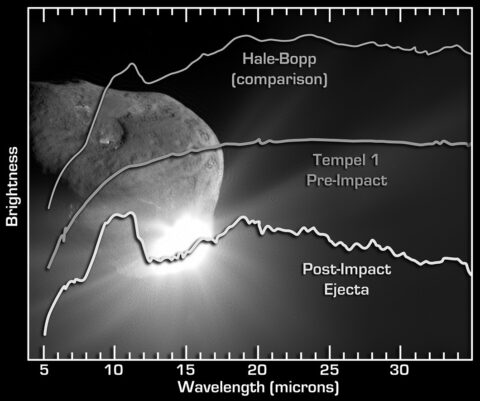
Spitzer was watching when the Deep Impact mission collided with comet Tempel 1 in July 2005. By comparing the spectra of the comet before and after the collision, Spitzer and Deep Impact scientists figured out what the dust released in the collision was made of.
“It was the first look at the primordial material buried beneath the crusty outer surface of a comet,” said Spitzer project scientist Mike Werner. Among the ingredients in Tempel 1’s so-called “comet soup” were water ice, sand-like silicates, clays, and carbonates. “And, very interestingly, we found that the composition of that material…was very similar to the composition of material which we see in exoplanetary systems,” he said.
2. Saturn’s Invisible Ring
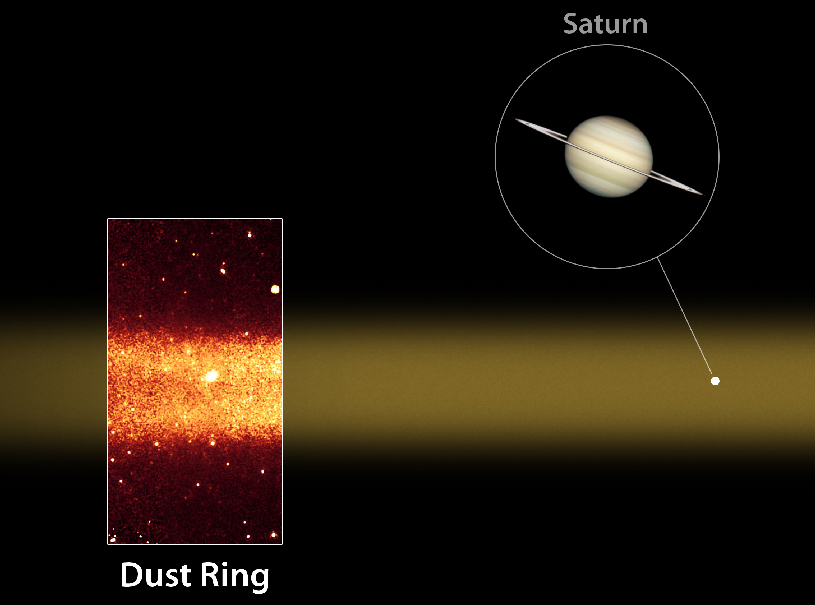
In 2009, scientists used Spitzer to detect a previously unknown ring of dust around Saturn. The ring glows in infrared light and is also much larger than any other known ring of Saturn. “If you could see the ring, it would span the width of two full Moons’ worth of sky, one on either side of Saturn,” Anne Verbiscer, an astronomer at the University of Virginia in Charlottesville and lead researcher on the discovery, said in a statement.
“The ring is 300 Saturns in diameter. So it’s gigantic,” Dodd said. “But the particles are tiny and tenuous and diffuse, and it was only [because of] the cool radiation given off by those particles in the ring that Spitzer was able to detect it when no other observatory had detected it before.”
3. Record-Breaking Planets in TRAPPIST-1
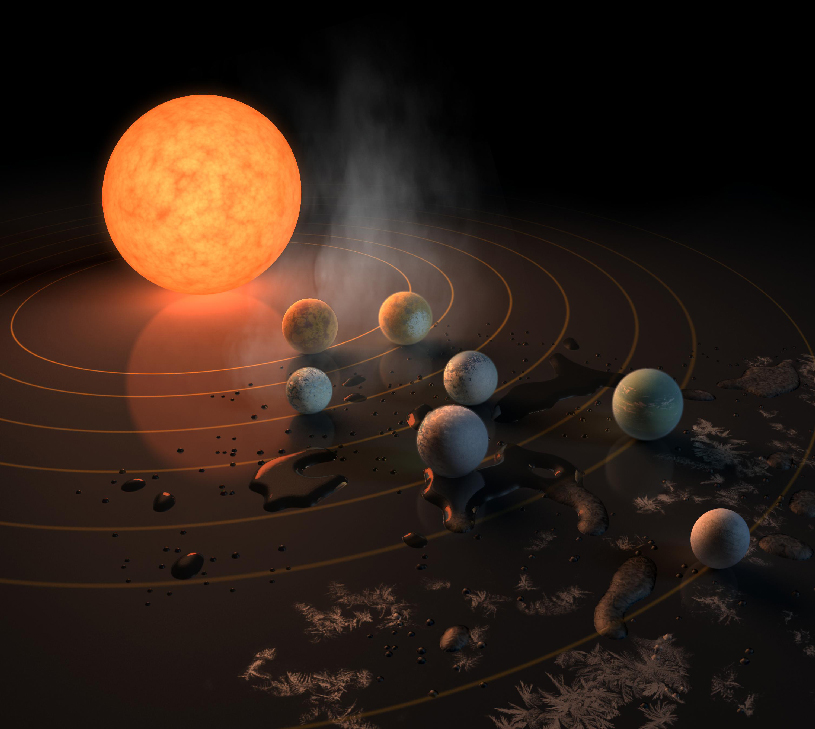
The TRAPPIST-1 exoplanet system made headlines in 2017. Although the cool red star was already known to host three small planets, astronomers used Spitzer to detect four more. All seven planets—the largest number of terrestrial exoplanets discovered in a single system at that time—are roughly the size of Earth and orbit closer to their star than Mercury does to the Sun. This planetary system captured the imaginations of scientists and nonscientists alike, not just because of the number of planets but also because of the potential for life.
“Of those seven planets…we expect that three of them are in the habitable zone, which is where water would be liquid on their surfaces, which we feel is important if they do harbor life,” Werner said. “This system has been well studied by Spitzer; it’s the most well studied system outside of our own.”
4. What’s Up with Alien Skies
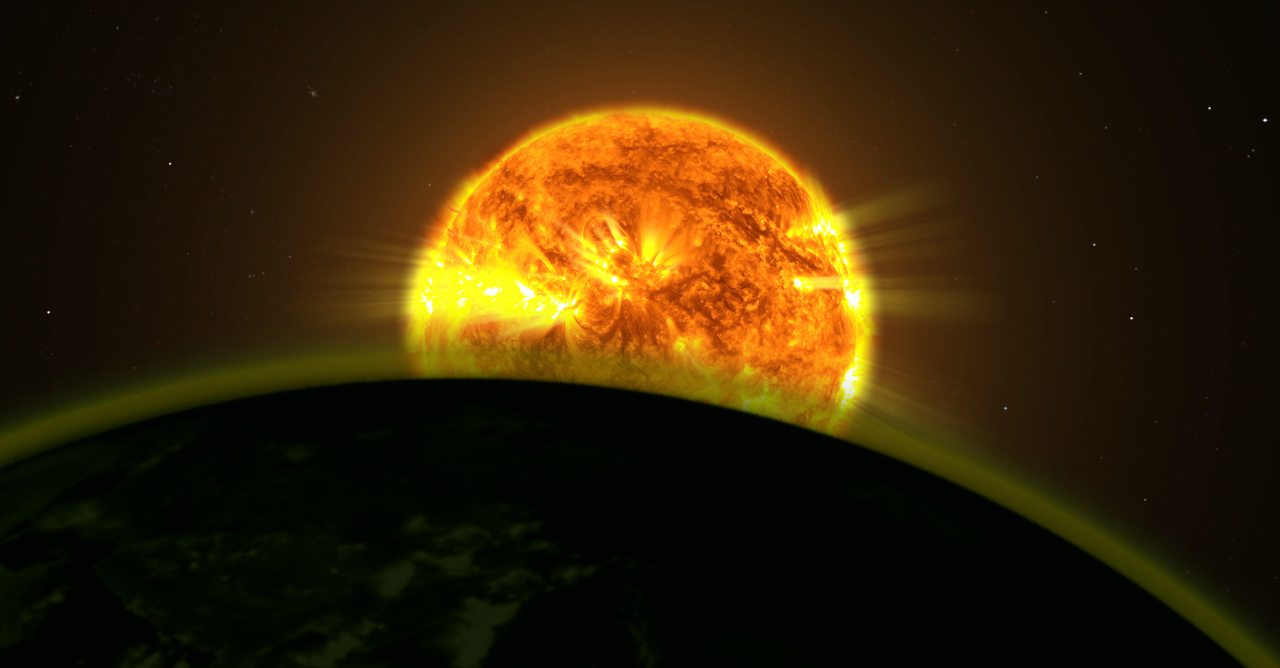
We know now that many exoplanets have atmospheres and, moreover, that we can detect and characterize them with our telescopes. Spitzer, along with Hubble and ground-based telescopes, has helped decode what exoplanet atmospheres are made of.
The largest contrast between the light from a star and the light from a planet’s atmosphere is often measured in infrared light. Using Spitzer, two independent teams directly measured the heat coming off of two exoplanets, TrES-1b and HD 209458b, for the first time in 2005.
Moreover, many common molecules, including water, methane, carbon monoxide, and carbon dioxide, have prominent spectroscopic signatures in the infrared. Spitzer has detected all of these molecules, and more, in the skies of distant worlds.
5. Stars’ Bow Shocks
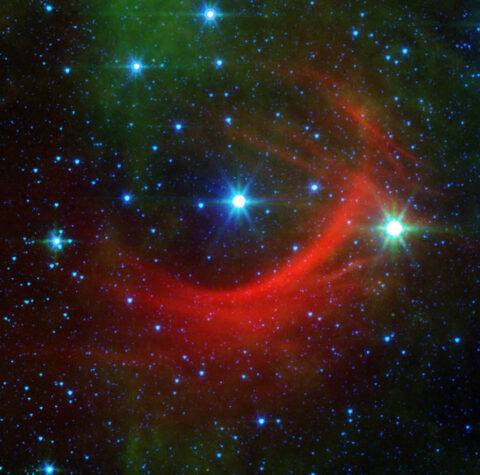
The Sun’s magnetic field creates a sort of bubble that encloses our solar system. As our bubble travels through the galaxy, it encounters the diffuse gas and dust that live between stars. The front of the bubble creates a bow shock in that material, like a speed boat traveling through water.
For leisurely galactic travelers like the Sun, bow shocks are mostly invisible at all wavelengths. The bow shocks of more dramatic and speedy stars are visible in infrared light, and Spitzer was able to detect them. Studying the bow shocks and bubbles of other stars gives a better understanding of our Sun’s magnetic field, solar wind, and interaction with the interstellar medium.
Up Next in the Infrared
Spitzer was in a unique, Earth-trailing orbit around the Sun. This orbit granted more freedom to observe the cosmos than does the low Earth orbit of the Hubble Space Telescope, but Spitzer has been steadily falling farther and farther behind Earth.
“It wasn’t in the plan to have Spitzer operating so far away from Earth, so the team has had to adapt year after year to keep the spacecraft operating,” said Spitzer project manager Joseph Hunt. As the telescope gets farther away from Earth, it has gotten harder to observe the universe while keeping the solar panels pointed toward the Sun and the communications array pointed toward Earth. Moreover, in 2009 the telescope ran out of the coolant its instruments needed to observe the colder and subtler infrared signals. “But I think overcoming that challenge has given people a great sense of pride in the mission,” Hunt said.
The end of Spitzer’s mission will mean a brief pause in NASA’s infrared observations. In 2021, however, the James Webb Space Telescope is scheduled to be launched and begin transmitting data. “The James Webb mirror is 50 times larger than the Spitzer mirror,” explained NASA’s director of astrophysics, Paul Hertz, “so we’ll be able to observe even deeper into the universe.”
With James Webb and later the Wide Field Infrared Survey Telescope, “we’re well positioned to continue studying the universe in the infrared.”
—Kimberly M. S. Cartier (@AstroKimCartier), Staff Writer
Citation:
Cartier, K. M. S. (2020), Five Spitzer discoveries about solar systems near and far, Eos, 101, https://doi.org/10.1029/2020EO139534. Published on 30 January 2020.
Text © 2020. AGU. CC BY-NC-ND 3.0
Except where otherwise noted, images are subject to copyright. Any reuse without express permission from the copyright owner is prohibited.
Text © 2020. AGU. CC BY-NC-ND 3.0
Except where otherwise noted, images are subject to copyright. Any reuse without express permission from the copyright owner is prohibited.

